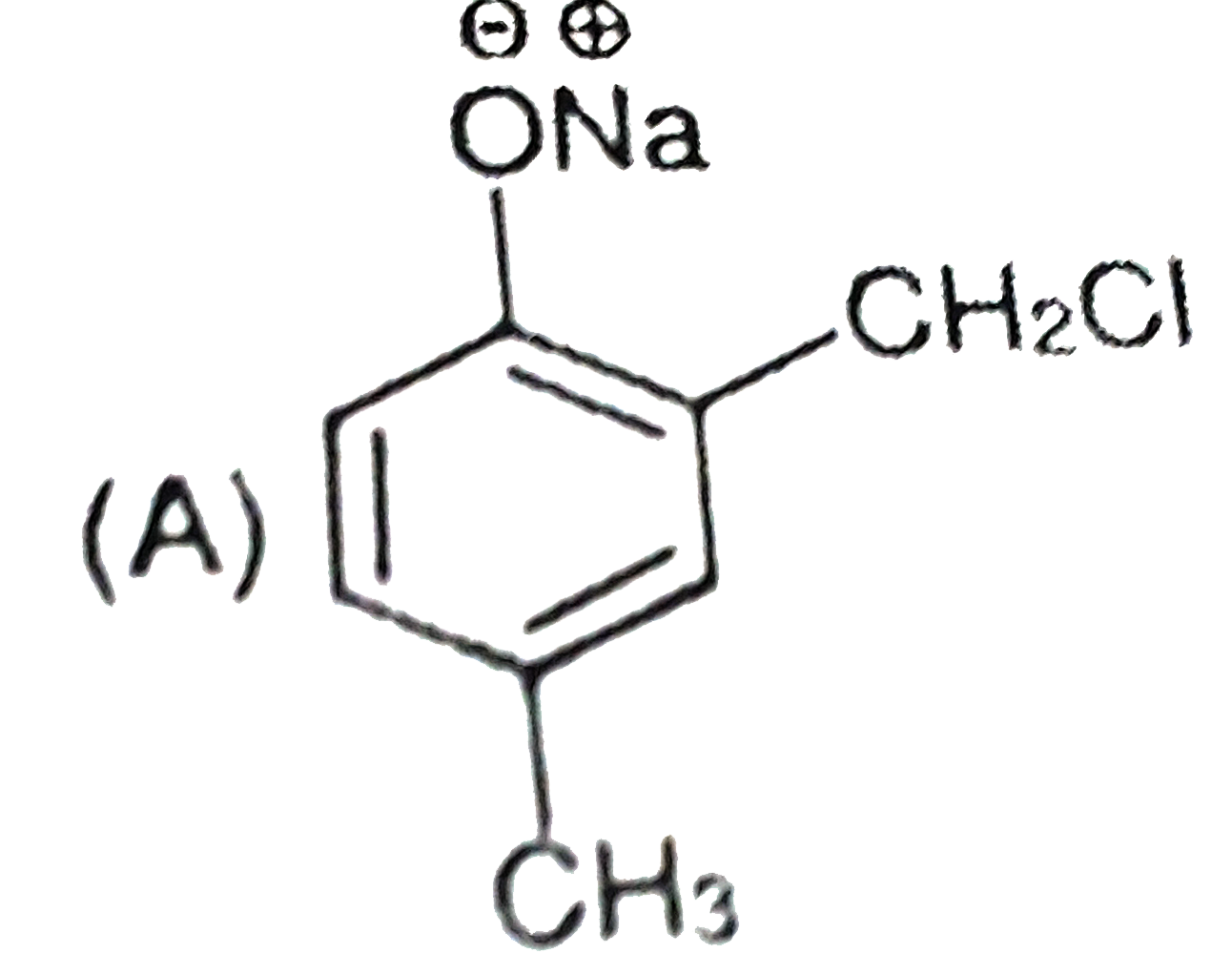Reimer-Tiemann reaction introduces an aldehyde group on to the aromatic ring of phenol, ortho to the hydroxyl group. This reacrtion involves electrophilic aromatic subsititution. It is a general method for the synthesis of subsituted salicyladehydes as depiced below:

The structure of the intremediate (I) is:




The correct Answer is:B
NA
Topper's Solved these Questions
- ALCOHOL,PHENOL AND ETHERSBOOK - CENGAGE CHEMISTRYCHAPTER - ALCOHOL,PHENOL AND ETHERSEXERCISE - Archives Multiple Correct
4 Videos
- ALCOHOL,PHENOL AND ETHERSBOOK - CENGAGE CHEMISTRYCHAPTER - ALCOHOL,PHENOL AND ETHERSEXERCISE - Archives Fill In The Blanks
6 Videos
- ALCOHOL,PHENOL AND ETHERSBOOK - CENGAGE CHEMISTRYCHAPTER - ALCOHOL,PHENOL AND ETHERSEXERCISE - Archives Assertion-Reasoning
2 Videos
- ALIPHATIC AND AROMATIC ALDEHYDES AND KETONESBOOK - CENGAGE CHEMISTRYCHAPTER - ALIPHATIC AND AROMATIC ALDEHYDES AND KETONESEXERCISE - Archives Subjective
29 Videos
Similar Questions
Reimer -Tiemann reaction introduces an aldehyde group on to the aromatic ring of phenol, ortho to the hydroxyl group. This reaction involves electrophilic aromatic substitution. This is a general method for the synthesis of substituted salicyladehydes as depicted below.

The structure of the intermediate I is
View SolutionReimer -Tiemann reaction introduces an aldehyde group on to the aromatic ring of phenol, ortho to the hydroxyl group. This reaction involves electrophilic aromatic substitution. This is a general method for the synthesis of substituted salicyladehydes as depicted below.

The electrophile in this reaction is
View Solution
Knowledge Check

Reimer-Tiemann reaction introduces an aldehyde group on to the aromatic ring of phenol, ortho to the hydroxyl group. Thi reaction involves electrophilic aromatic substitution. It is a general method for the synthesis of substituted salicylaldehydes as depicted below:
Q. The structure of intermediate (I) is:A B
B C
C D
D
Reimer-Tiemann reaction introduces an aldehyde group, on to the aromatic ring of phenol, ortho to the hydroxyl group. This reaction involves electrophilic aromatic substitution. This is a general method for the synthesis of substituted salicyladehydes as depicted below.

The structure of the intermediate I isA B
B C
C D
D
Riemer-Tiemann reaction intorduces an aldehyde group, on to the aromatic ring of phenol, ortho to the hydroxyl group. This reaction involves electrophilic aromatic substitution. This is a general method for the synthesis of substitued salicyladehydes as depicted below.

The structure of the intermediate I is:A B
B C
C D
D
Reimer-Tiemann reaction introduces an aldehyde group on to the aromatic ring of phenol, ortho to the hydroxyl group. This reacrtion involves electrophilic aromatic subsititution. It is a general method for the synthesis of subsituted salicyladehydes as depiced below:

The electrophile in this reaction is:
View SolutionReimer-Tiemann reaction introduces an aldehyde group on to the aromatic ring of phenol, ortho to the hydroxyl group. This reacrtion involves electrophilic aromatic subsititution. It is a general method for the synthesis of subsituted salicyladehydes as depiced below:

Which one of the following reagents is used in the above reaction ?
View SolutionReimer-Tiemann reaction introduces an aldehyde group, on to the aromatic ring of phenol, ortho to the hydroxyl group. This reaction involves electrophilic aromatic substitution. This is a general method for the synthesis of substituted salicyladehydes as depicted below.

The electrophile in this reaction is
View Solution
Reimer-Tiemann reaction introduces an aldehyde group on to the aromatic ring of phenol, ortho to the hydroxyl group. Thi reaction involves electrophilic aromatic substitution. It is a general method for the synthesis of substituted salicylaldehydes as depicted below:
Q. The electrophilic in this reaction is-
View Solution
Reimer-Tiemann reaction introduces an aldehyde group on to the aromatic ring of phenol, ortho to the hydroxyl group. Thi reaction involves electrophilic aromatic substitution. It is a general method for the synthesis of substituted salicylaldehydes as depicted below:
Q. Which one of the following reagents is used ini the above reaction?
View Solution
